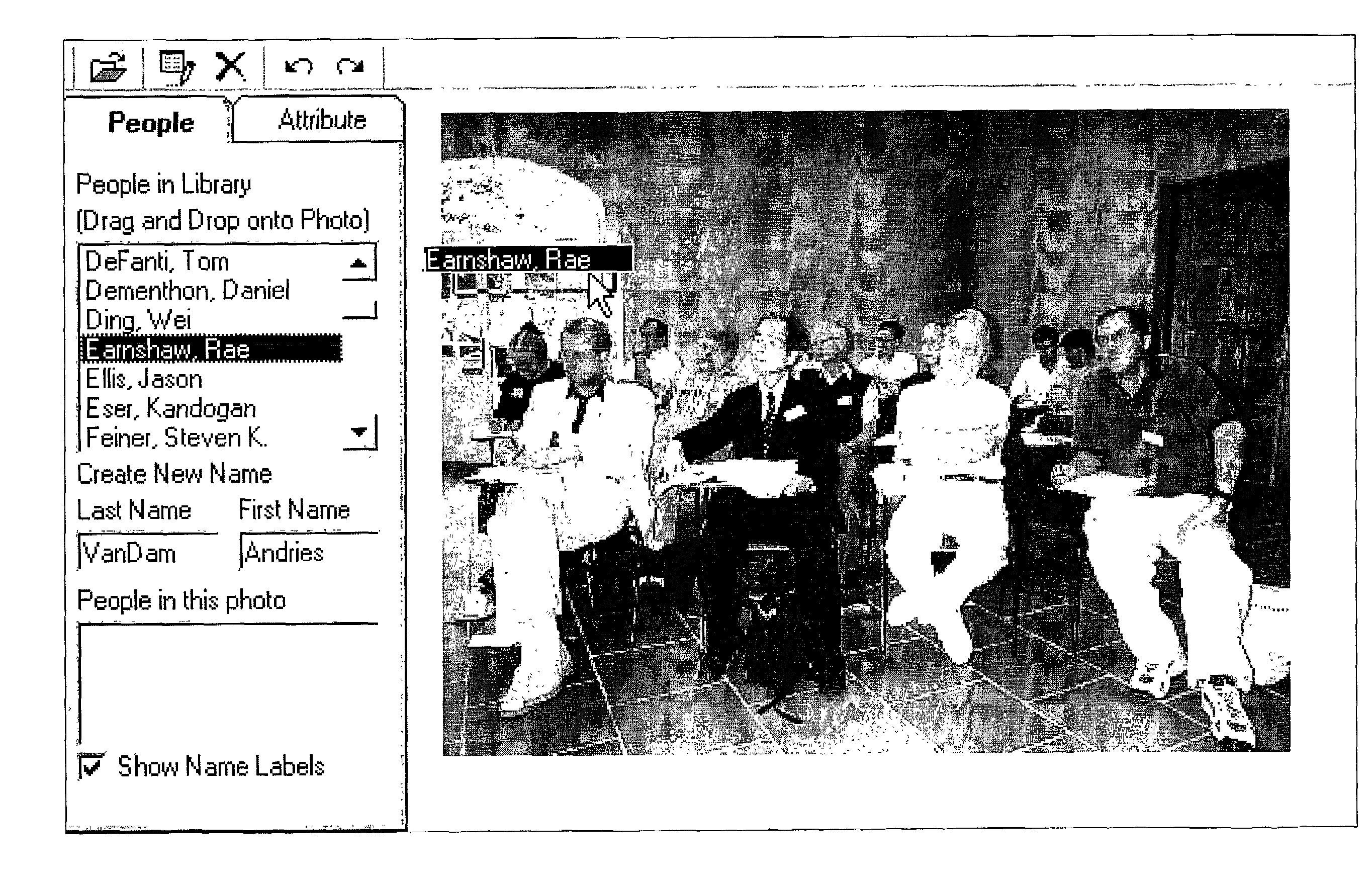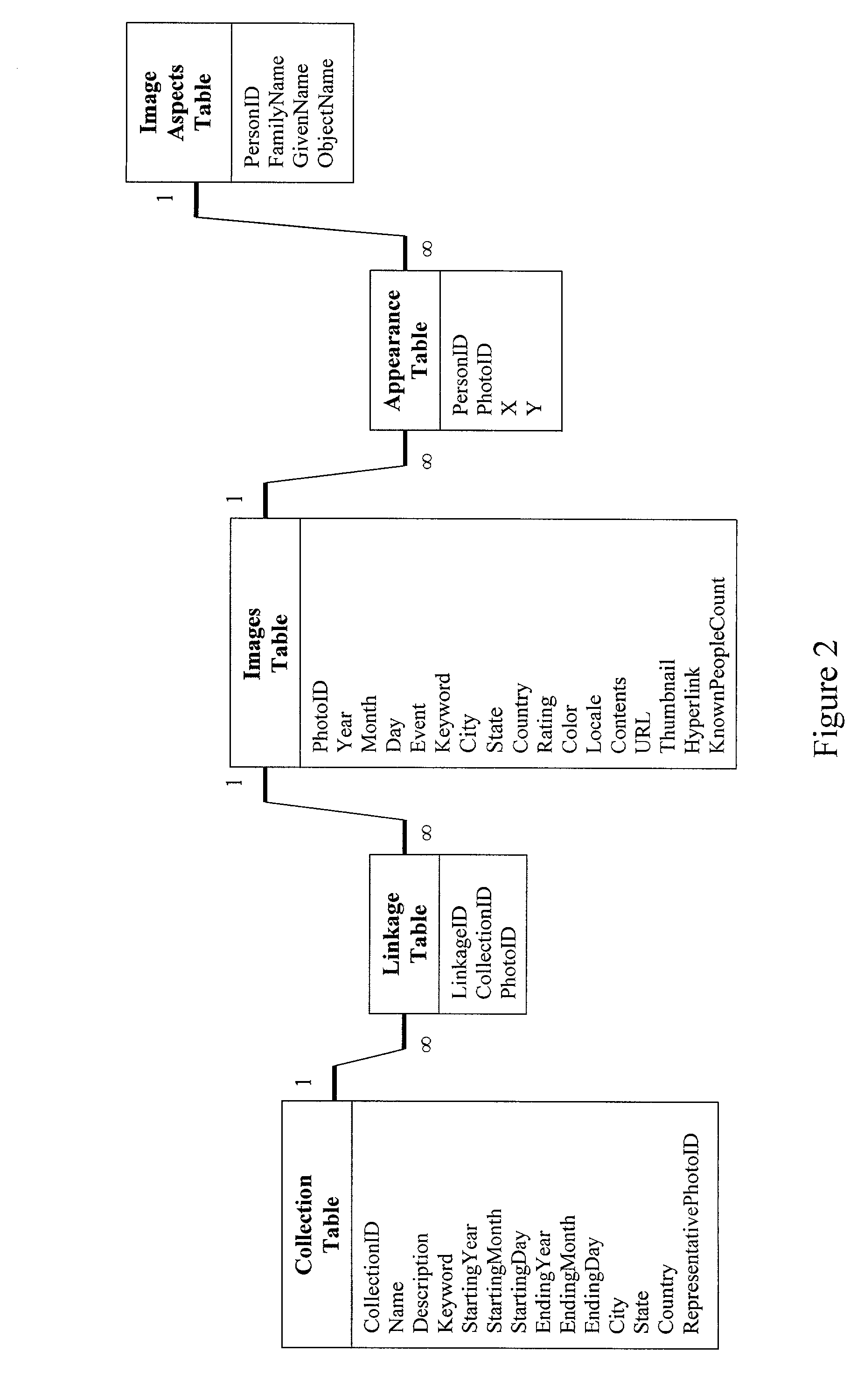Methods for the electronic annotation, retrieval, and use of electronic images
a technology of electronic images and captions, applied in the field of electronic annotation, retrieval, and use of electronic images, can solve the problems of inexorable loss of information, paradoxical diminution of value, and time-consuming and error-prone tasks for professional photographers, librarians, curators, etc., and achieves low error rate, easy to learn, and easy to accomplish
- Summary
- Abstract
- Description
- Claims
- Application Information
AI Technical Summary
Benefits of technology
Problems solved by technology
Method used
Image
Examples
Embodiment Construction
[0043]The present invention relates to computer software for facilitating the annotation of one or more desired image aspects present in an electronic image and for employing such annotations to facilitate the retrieval, organization, collection, display or distribution of the associated electronic images.
[0044]As used herein, the term “computer” is intended to encompass any electronic device that accepts (i.e., store, generate, or process) image information in electronic form and manipulates such information for a result based upon a sequence of instructions. Thus, as used herein, the term computer is intended to encompass not only mainframe, web-based, personal and laptop computers, but also personal digital assistants (PDAs), digital cameras, televisions, video game systems (e.g., Playstation2®, video storage systems (e.g., TiVo®), and telephones, etc. that have the capability of accepting such information. The term “software” is intended to refer to a set or sequence that direct...
PUM
 Login to View More
Login to View More Abstract
Description
Claims
Application Information
 Login to View More
Login to View More - R&D
- Intellectual Property
- Life Sciences
- Materials
- Tech Scout
- Unparalleled Data Quality
- Higher Quality Content
- 60% Fewer Hallucinations
Browse by: Latest US Patents, China's latest patents, Technical Efficacy Thesaurus, Application Domain, Technology Topic, Popular Technical Reports.
© 2025 PatSnap. All rights reserved.Legal|Privacy policy|Modern Slavery Act Transparency Statement|Sitemap|About US| Contact US: help@patsnap.com



